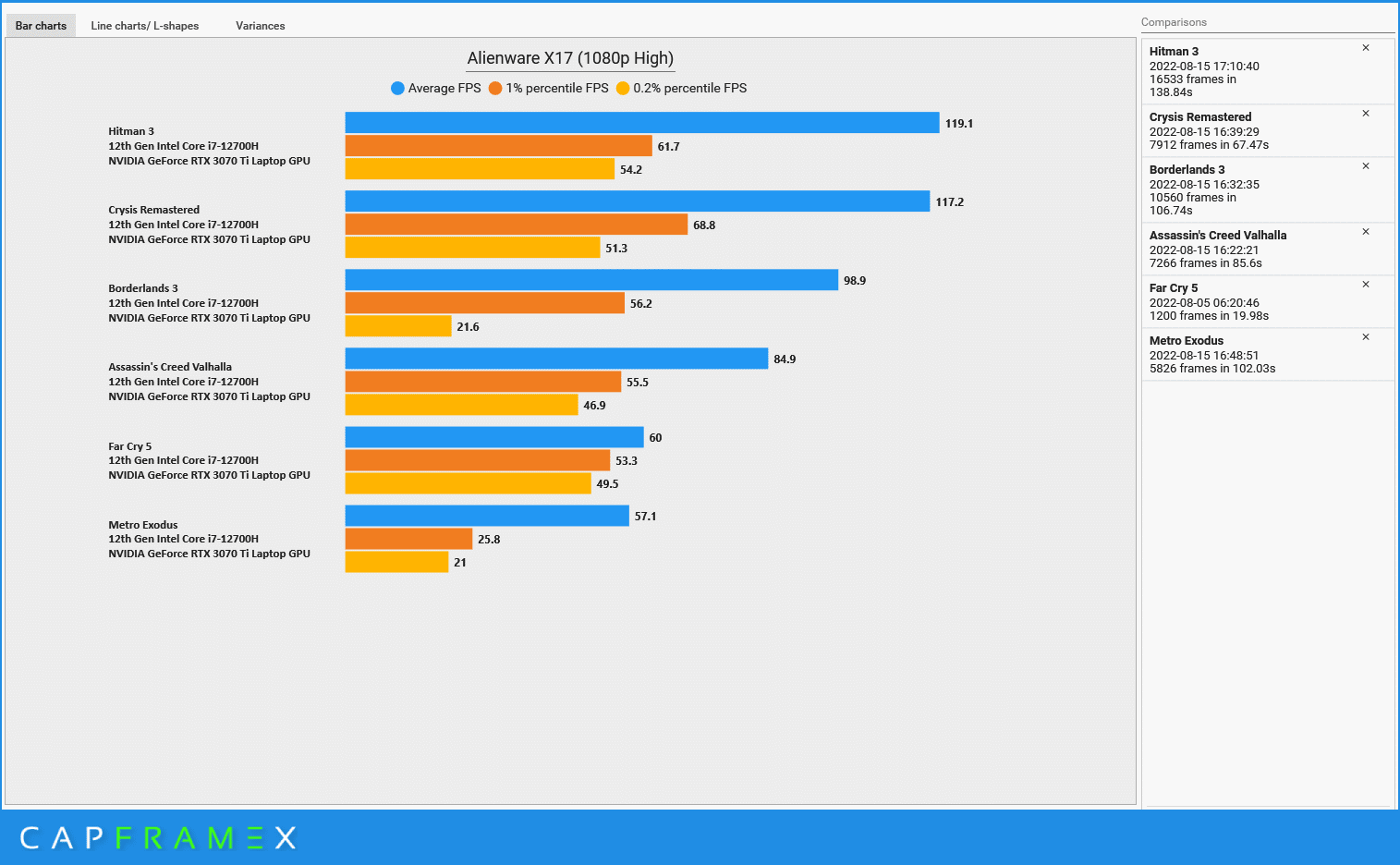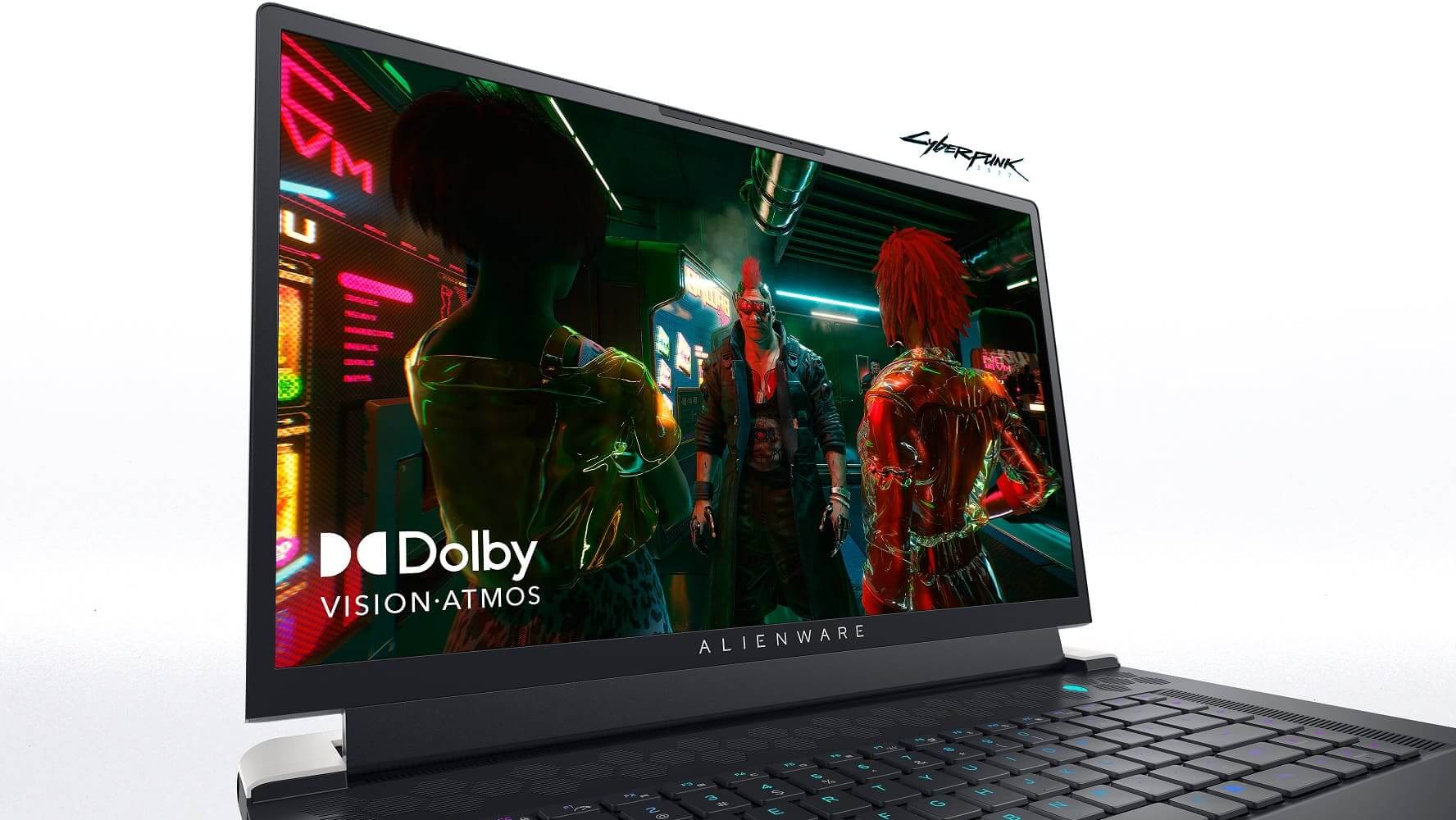Alienware has been one of the premier names in the gaming notebook scene for as far as anyone can remember. Bulky form factors, RGB lighting, and large displays are usually the key highlights of these machines from the outside. Under the hood, you can almost certainly expect the fastest CPU paired with (one of the) fastest GPUs and a lot more memory than you’ll ever need. Today we’ll be testing one such device: The Alienware X17 R2 featuring the Intel Core i7-12700H and the GeForce RTX 3070 Ti alongside 32GB of dual-channel DDRR5-4800 memory. The display is laser-focused on high-end eSports and shooters with a refresh rate of 360Hz with NVIDIA G-Sync support at a very basic 1080p resolution.

This particular model costs over $2.5K USD (or ₹ 3,10,990.01 on the subcontinent), making it one of the most expensive notebooks in the segment. We’ll be pitching it against cheaper (but generally slower offerings) on the market and see for ourselves if the X17 is worth the steep asking price.
Alienware X17 vs ASUS Strix G17: Core i7-12700K vs Ryzen 9 6900HX
The ASUS ROG Strix G17 and the X17 both feature the GeForce RTX 3070 Ti mobile paired with high-end Intel and AMD CPUs, the 6900HX (Rembrandt) on one end and the Core i7-12700H (Alder Lake) on the other. Since the Alienware brand screams gaming inside and out, that’s what we’ll begin with:

In Crysis Remastered and Hitman 3, the Alienware X17 easily squishes the Strix. The Core i7-12700H and its superior single-core performance come into play here, leaving the Ryzen 9 6900HX in the dust. We’re looking at deltas of 20-25% between the two on average. The lows are a much closer affair though, being pretty much the same if you take the 0.2% into account.

The Alienware X17 manages close to 100 FPS in most titles with the more intensive recent games registering somewhere between 60 and 80 FPS. The lows are well over the 45+ mark which is considered the bare minimum for smooth gameplay.
PCMark 10
PCMark 10 is regarded as one of the most comprehensive benchmarks on the market. It analyses the single-threaded, lightly threaded as well as heavily threaded capabilities of a system.

The Strix G17 and the Alienware X17 perform much closer to one another here. In content creation (heavily threaded), it’s a tie while productivity sees the Core i7-12700H edge past with a slim lead. Essentials continue to favor the Intel chip on account of the superior single-threaded performance. (https://tabsnation.com/)

The default behavior of the X17 on battery power isn’t very productive. It doesn’t lose much performance but chews through the battery in less than a couple of hours. The Strix G17 scores roughly as much but the battery life is significantly longer.
Thermals, Clocks, and Power
The Core i7-12700H hovers mostly between 1.5GHz and 4.5GHz with brief spikes to 4.7GHz every now and then. This also explains why the battery runs out as fast as it does. Most notebooks have a more conservative approach to frequency scaling. The X17 is much more responsive to its own detriment.


The power consumption is fairly decent for a high-end CPU, ranging from 10W to 70W in most workloads, and peaking at 90W in content creation/video editing. Like the power, the thermals are also quite impressive for a high-end gaming notebook. The CPU temperature averages 70-80 degrees with an upper limit of 90 in everyday tasks.

Despite having a dismal battery backup, the CPU clocks do take a hit when unplugged. The cores are limited to 4GHz and average 3.85GHz in most applications. Content creation and video editing, however, do tank the frequency, sinking it down to 3.2GHz. The power consumption is also capped at 30W but does jump all the way up to 80W in intensive tasks. As expected, the thermals also drop, swinging between 50 and 70 degrees throughout the run.



Conclusion: With Great Power Comes Great Responsibility
The Alienware X17 offers everything a gamer would want: Unbeatable performance, high refresh rates, slick build, and of course a mechanical keyboard with plenty of RGB. However, most people won’t be able to afford this halo offering. We’re looking at a market price that’s nearly a grand over comparable options such as the ROG Strix G17. If you have the money to spare and want the very best, then this is something you’ll want to check out.






